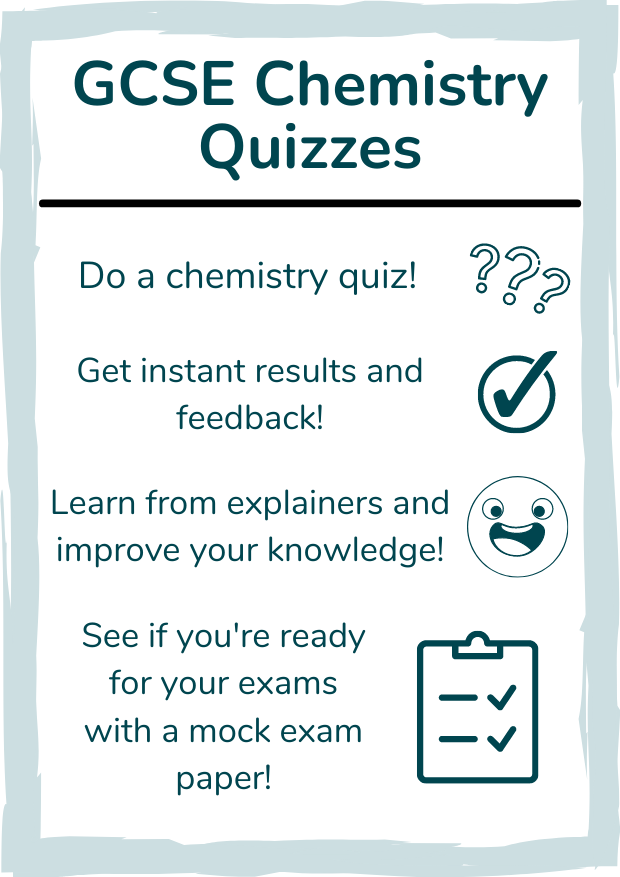Have a go at our GCSE Chemistry quiz, try again for new questions.
GCSE Chemistry Quiz
This GCSE Chemistry Quiz is a sample of all of our GCSE Chemistry Quizzes, choose between 15, 30 or 50 random questions from a pool of over 300!
This quiz should give you a sense of how you’re doing in chemistry, but if you want an even clearer picture you should consider doing our Digital Mock Exam Papers which are specific to your course, containing only questions that meet the specification of your exam board.
The questions on this quiz are a combination of what may appear on all three main exam boards (AQA, Edexcel and OCR) but since there is a very high overlap between the courses, this quiz can be a great tool for revision when you’re not sure what you’re lacking.
Our suggestion is to take the quiz and then note down the topics where you made mistakes. Then you can use the list of topics to practice on more specific chemistry quizzes. We hope this GCSE Chemistry Quiz has been helpful and if you want to find out more about what Discover Tutoring can do for you, consider reaching out or taking a look at our Chemistry page.

Take the quiz below for 15 questions or scroll up to select a bigger quiz!
